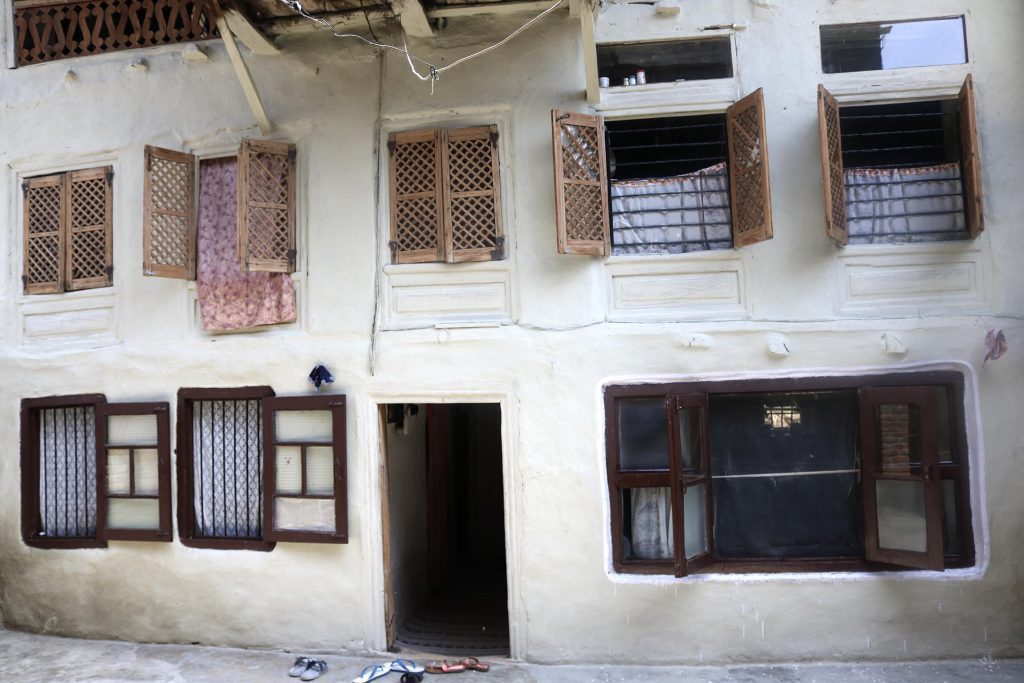Pashmina, the famed fabric of the valley became famous all over the world by the name of ‘Cashmere’. The fabric was first seen in Kashmir for the first time, and the western pronunciation of it termed the name ‘Cashmere’.
The goat which sheds the fleece, naturally every spring, is called Chanthangi and is found in the Ladakh region. The animal is named after the plateau-Chanthang, which is its natural habitat.
The goat is mostly reared by a nomadic tribe known as the Changpa. It is also found in the neighbouring region of Tibet.
The raw material, once collected, reaches the valley of Kashmir. There, the fleece is entirely hand woven, freed of all impurities, spinned, coloured by master craftsmen and women.
Take our pictorial tour to see how the dead fleece of an animal comes back to life again…

A hundred year old mud house in Downtown Srinagar, housing a factory of Pashmina shawls. (FPK Photo/Vikar Syed)

The process begins with the purchase of wool, reared from Ladakhi goat Changthangi, measured in grams. (FPK Photo/Vikar Syed)

Wool is again combed to remove impurities like guard hair and straightened for spinning. (FPK Photo/Vikar Syed)

Raja Begum (70), one such craftswoman, in order to make ends meet, has been spinning wool into yarn from the past 40 years. (FPK Photo/Vikar Syed)

The yarn is set on a loom in vertical warps (yenn) and horizontal wefts (woanun) are made. (FPK Photo/Vikar Syed)

The yarn is weaved into shawls, with interlacing long threads passing in one direction with others at a right angle to them. (FPK Photo/Vikar Syed)

(FPK Photo/Vikar Syed)

Depending on the product, the fabric, or the yarn is dyed using chemical or natural dyes. (FPK Photo/Vikar Syed)

(FPK Photo/Vikar Syed)

The fabric is washed and dried on river banks. Often the fabric is embroidered with traditional motifs before washing. (FPK Photo/Vikar Syed)








